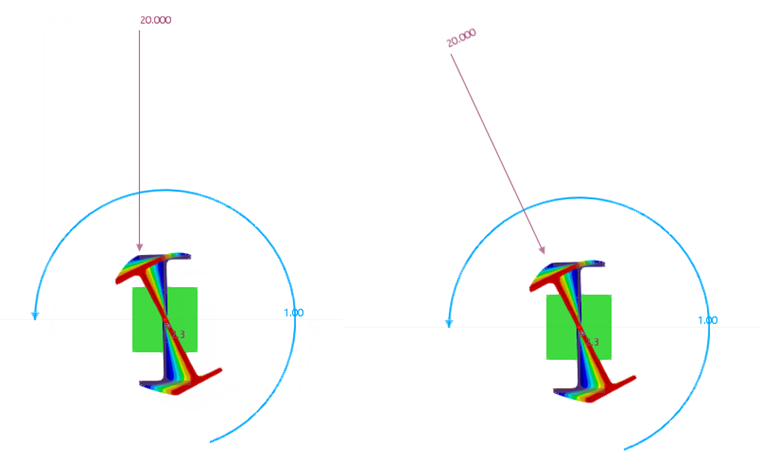The loading is entered, and the calculation with 7 degrees of freedom is performed on the graphical user interface of RFEM and RSTAB. You can manage the loads from various actions using load cases and combine them with load combinations. The following chapters of the RFEM manual and their subchapters provide an overview of the essential functions:
Unless otherwise specified in this manual, the loading functions described in the RFEM 6 manual also apply when using the Torsional Warping (7 DOF) add-on. All load types and load wizards available in RFEM and RSTAB can also be used in combination with the add-on without restriction. Additional load types, such as bimoments, are currently not implemented.
In the subchapter Load Application Point, you will find information on the load eccentricity and the load application point for the various load types.
Load Behavior in Geometrically Nonlinear Calculation
In the case of a geometrically nonlinear calculation (a second-order analysis or a large deformation analysis), the rotation of the FE mesh points is taken into account when applying the load. A member rotation can therefore result in an additional eccentricity for the load.
The effective direction of the load is generally kept in calculations with RSTAB. This is also referred to as a conservative load approach. For example, a member load defined in “local z” will also be effective if the local coordinate system is rotated back to its original direction.
In RFEM, a distinction is made between the following directions: Loads related to a global coordinate system continue to act in the direction of this unchanged global coordinate system (conservative load approach). Loads related to a local coordinate system act in the updated direction of the local coordinate system (subsequent load).
